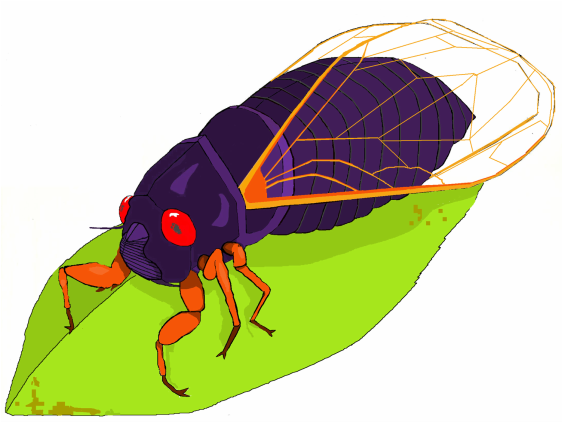artwork by Bradford P Ward

All of Meadowfield is anxiously awaiting the emergence of The Great Cicada. After all, it is an event that happens only after 17 Great Colds and 17 Warming Times and most bug-fellows never live to see it. When our story opens, it is the 17th Warming Times and the Queen Bee is in rare form as she prepares to host The Great Cicada Ball.
All of Meadowfield is ready to celebrate. Once the Great Cicada leaves the ground, he will signal masses of cicada nymphs to join him. They will fill the skies and keep the Beak Beast bellies so full, the Beasts won't think about bothering any other bug-fellow. Cicadas will prune the trees, providing a new luxurious growth of leaves for many suntimes to come. And once the cicadas die, their bodies will decay in the flowering fields to enrich the soil for the greatest blooming Meadowfield has ever seen. Life will be good.
Or will it?
You'll find out when you read The Great Cicada Ball--the second amazing book in the Cockroach of Meadowfield trilogy.
All of Meadowfield is ready to celebrate. Once the Great Cicada leaves the ground, he will signal masses of cicada nymphs to join him. They will fill the skies and keep the Beak Beast bellies so full, the Beasts won't think about bothering any other bug-fellow. Cicadas will prune the trees, providing a new luxurious growth of leaves for many suntimes to come. And once the cicadas die, their bodies will decay in the flowering fields to enrich the soil for the greatest blooming Meadowfield has ever seen. Life will be good.
Or will it?
You'll find out when you read The Great Cicada Ball--the second amazing book in the Cockroach of Meadowfield trilogy.
A fascinating film by Samuel Orr that captures the amazing life cycle of the 17 year cicada, from egg to emergence and egg again. A classic!
Return of the Cicadas from motionkicker on Vimeo.
